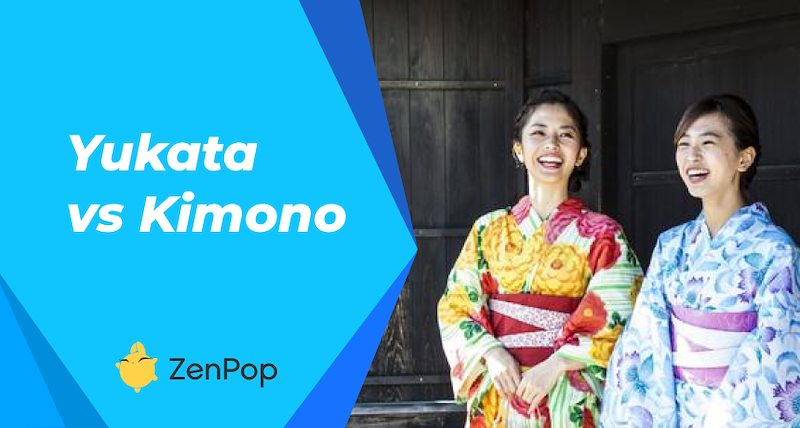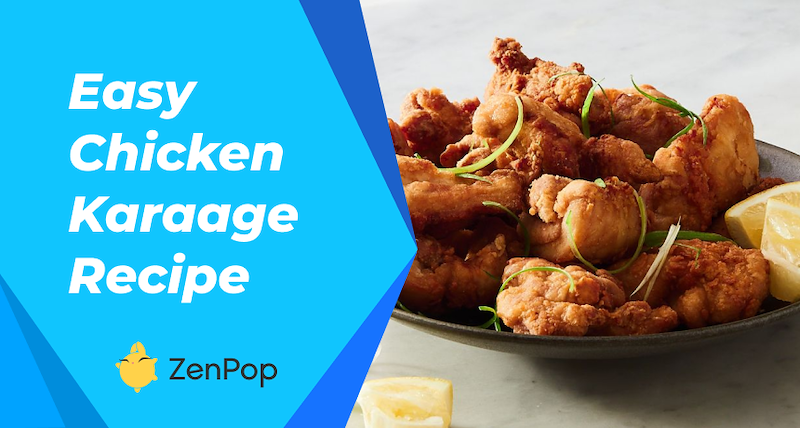
</title><meta name="robots" content="noindex">Easy Karaage Recipe: How to Make Japanese-Style Fried Chicken
Every country has its very own fried chicken recipe. In Japan, it’s called the karaage chicken. Typically served in bite-sized pieces, these are not your typical chicken pops or nuggets.
Today, you will learn how to make karaage chicken. We’ll show you how the Japanese make it uber-crunchy, extra juicy, and mouthwateringly flavorful.
What is karaage?
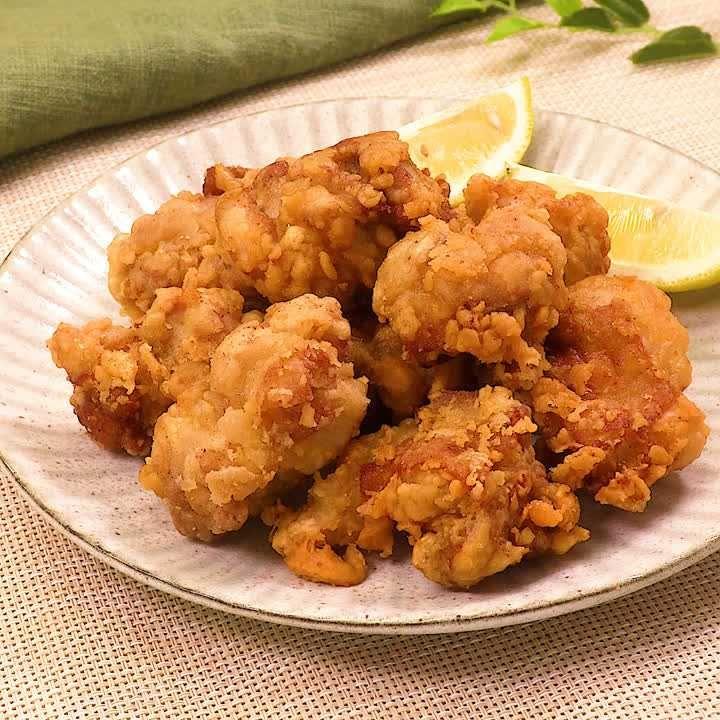
In Japan, karaage (唐揚げ) is a cooking style that involves deep-frying. The ingredients are typically coated in a mixture of flour and potato starch. While most people believe that karaage only uses chicken, this isn’t always the case. Some the karaage style frying of veggies, other types of meat, and fish.
In order to make karaage chicken, small slices of the chicken thigh are coated and fried. This home-cooked dish is marinated prior to cooking.
What is karaage made of?
The delectable Japanese dish uses chicken pieces marinated in a wonderful mixture of soy sauce, cooking sake, garlic, and ginger.
Karaage vs. Your Typical Fried Chicken
The major distinction between karaage and fried chicken is the way the meat is seasoned. In karaage, seasoning the chicken is the initial step. Afterward, it is coated with flour. The Japanese usually use skin-on, boneless chicken thighs.
On the other hand, when making fried chicken, the meat is coated in seasoned batter or flour. It can either be made using skinless and boneless chicken meat or skin-on, bone-in meat.
A Brief History of Karaage
The frying technique that originated from China has been around since the Edo era — a time when tempura became popular among commoners.
In Japan following the Second World War, shortages were a common occurrence. In order to feed a big population at a minimal cost, industrial breeding was implemented as part of a significant state reform in the food industry.
Because of its versatility, chicken was preferred because it was already a family kitchen staple. According to sources, the dish was popularized by Toyoken which is a restaurant in Beppu, A city on Japan's Kyushu island.
How Karaage is Typically Served
Karaage Takeout in Tokyo
Karaage is among the many home-cooked meals in Japan, which is locally called katei ryouri (家庭料理). It can either be the appetizer or the main dish.
If you purchase a complete bento set or a teishoku (set meal), karaage chicken is a popular protein choice. The dish also goes well with alcoholic drinks. And in some cases, it is served as a snack.
Does karaage use chicken breast or thigh?
Karaage chicken generally uses boneless chicken thighs with the skin on. This is because you can achieve a more flavorful dish using this part. The skin is needed to make the chicken pieces crunchy on the outside and juicy within. But feel free to use chicken breasts if you prefer to do so.
Juicy, Crispy and Easy Karaage Fried Chicken Recipe
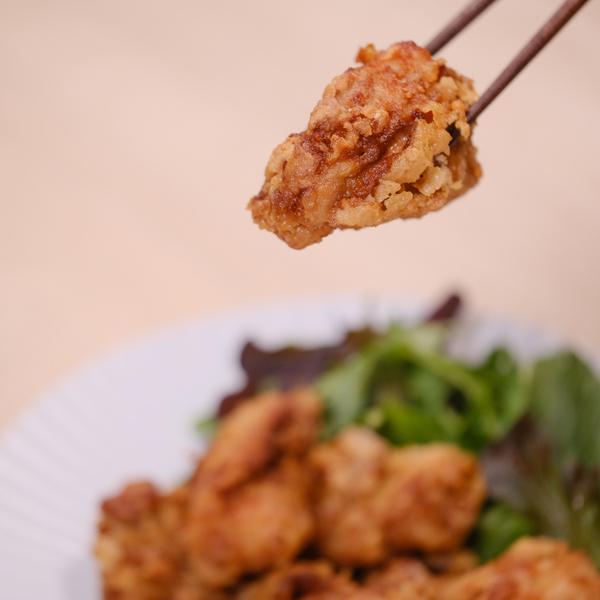
- Prep Time: 20 minutes
- Servings: 2
Ingredients:
- 200 g chicken thigh (deboned)
- 1 teaspoon grated garlic (needs to be a paste-like texture)
- 1 teaspoon grated ginger (needs to be a paste-like texture)
- A small amount of salt and pepper
- 1 tablespoon soy sauce
- 1 tablespoon cooking sake
- 2 tablespoons mayonnaise
- 30 grams potato starch
- 20 grams wheat flour
- Oil
Instructions:
1. To ensure that the chicken cooks evenly, equally cut the deboned chicken thigh into bite-sized pieces.
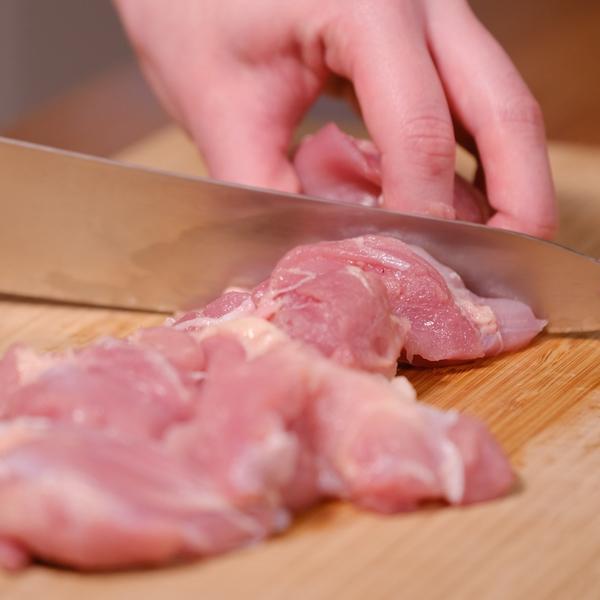
2. Place the chicken inside a zipper bag or any resealable bag.
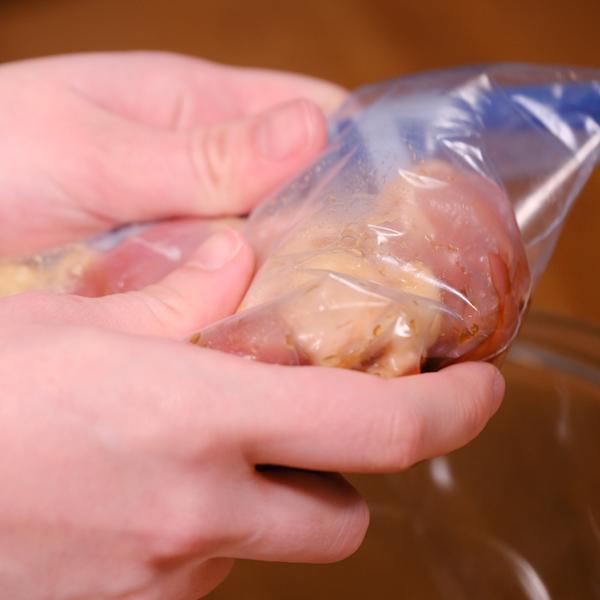
Then, put the grated garlic, grated ginger, salt and pepper, soy sauce, and sake into the bag to mix the flavors with the chicken meat. When doing so use a spatula instead of sharp utensils like a fork. Place a bowl underneath the bag so that it can easily catch the ingredients in case the bag gets torn. Rub the bag in such a way that the moisture from the seasoning mixes with the chicken meat
3. Once the flavoring mixes with the chicken well, add the mayonnaise.
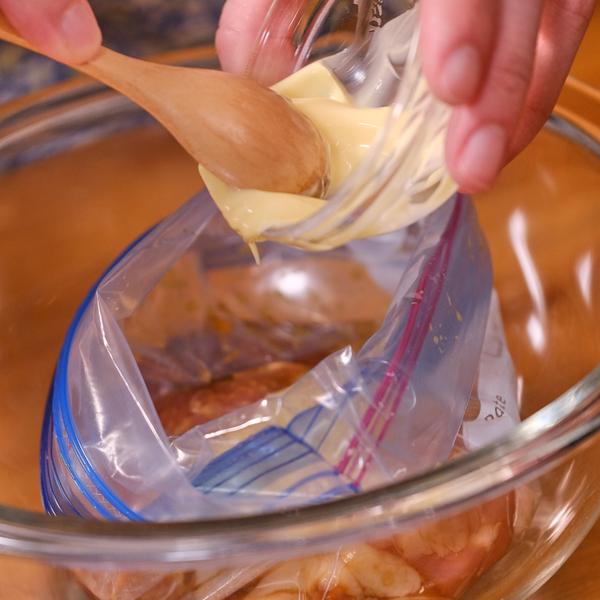
The purpose of the mayonnaise is to make the taste milder and juicier. If you don’t like the flavor or mayonnaise, adding some won’t be an issue because its flavor will disappear when you fry it.
4. Let the mixture sit for 15 to 30 minutes.
5. Mix the two types of flour then coat chicken pieces in the mixture. The purpose of these ingredients is to make your karaage crispy.
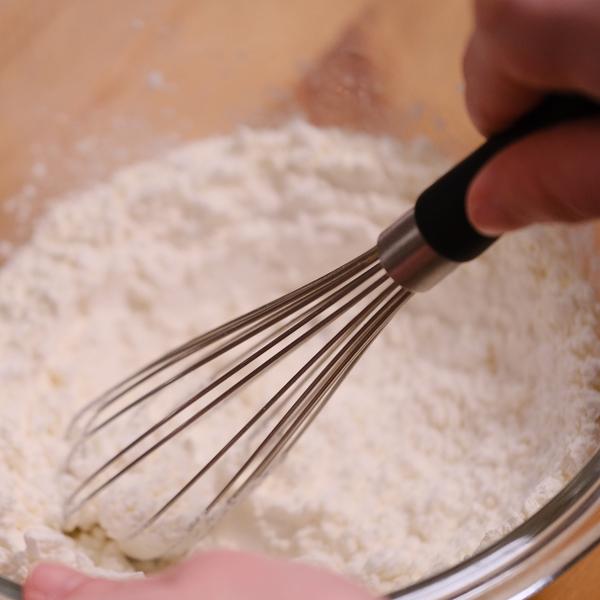
6. Using chopsticks, take out a chicken piece from your bag and coat it with the flour mixture. Do it to the rest as well. Remember to roll the pieces on the mixture quickly because too much flour will worsen the texture of your karaage.
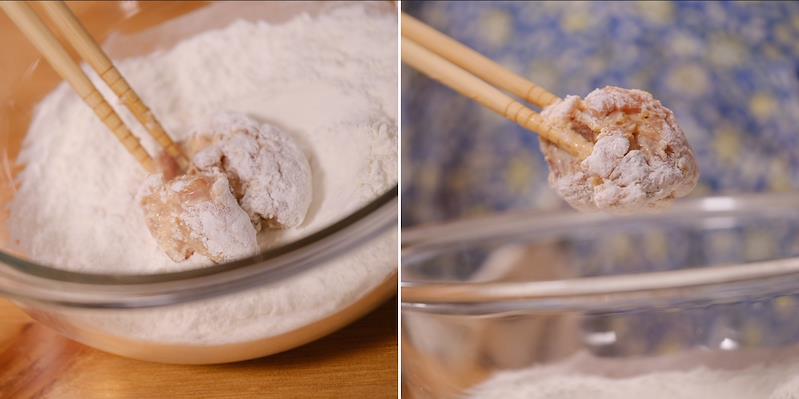
7. The next step is to deep-fry the chicken bites. Heat the oil to 170 degrees. You’ll know this when you dip your chopsticks into the oil and notice that small bubbles appear around them. Fry the chicken pieces until they turn brown. Remove from heat and let them sit for about three minutes.
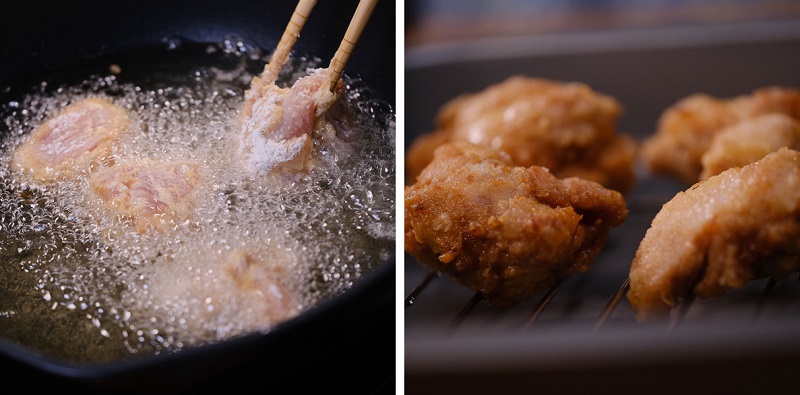
8. Deep-fry the chicken pieces for the second time. Heat the oil until it reaches 190 degrees. Determine the temperature using chopsticks once again. If bubbles appear vigorously around it, then you’ve reached the required temperature. Fry the rested chicken pieces once again. Remove from heat once they turn golden brown like the one from the picture below.

Drain the oil off the chicken bites and enjoy your juicy and crispy karaage!
Frequently Asked Questions
What is the secret to a juicy and crispy karaage?
As you can see from the procedures above, it involves deep-frying the chicken pieces twice. Doing so makes the exterior extra crispy. The marinating process, on the other hand, will make your karaage juicy.
What is the difference between Katsu and karaage?
The main difference between katsu and karaage is that the former uses panko breadcrumbs, while the latter does not.
Katsu is also supposed to be thin and wide. Moreover, it uses a brown-colored sauce called tonkatsu. Unlike karaage, it does not involve the marinating process.
How important is it to use potato starch?
In Japan, potato starch or katakuriko (片栗粉) is a common ingredient in fried dishes. It’s a key ingredient to making your karaage ultra crispy. If you don’t have it at home, the closest substitute is corn starch, which is a staple of a completely stocked pantry.
We highly recommend checking your online stores as they are likely selling potato starch that’s ideal for making karaage chicken.


